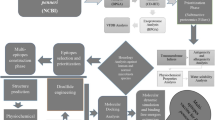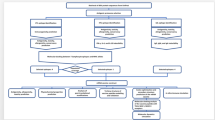Abstract
The common “a” determinant is the major immunodominant region of hepatitis B surface antigen (HBsAg) shared by all serotypes and genotypes of hepatitis B virus (HBV). Antibodies against this region are thought to confer protection against HBV and are essential for viral clearance. Mutations within the “a” determinant may lead to conformational changes in this region, which can affect the binding of neutralizing antibodies. There is an increasing concern about identification and control of mutant viruses which is possible by comprehensive structural investigation of the epitopes located within this region. Anti-HBs monoclonal antibodies (mAbs) against different epitopes of HBsAg are a promising tool to meet this goal. In the present study, 19 anti-HBs mAbs were employed to map epitopes localized within the “a” determinant, using a panel of recombinant mutant HBsAgs. The topology of the epitopes was analyzed by competitive enzyme-linked immunosorbent assay (ELISA). Our results indicate that all of the mAbs seem to recognize epitopes within or in the vicinity of the “a” determinant of HBsAg. Different patterns of binding with mutant forms were observed with different mAbs. Amino acid substitutions at positions 123, 126, 129, 144, and 145 dramatically reduced the reactivity of antibodies with HBsAg. The T123N mutation had the largest impact on antibody binding to HBsAg. The reactivity pattern of our panel of mAbs with mutant forms of HBsAg could have important clinical implications for immunoscreening, diagnosis of HBV infection, design of a new generation of recombinant HB vaccines, and immunoprophylaxis of HBV infection as an alternative to therapy with hepatitis B immune globulin (HBIG).

Similar content being viewed by others
References
Alavian SM, Carman WF, Jazayeri SM (2013) HBsAg variants: diagnostic-escape and diagnostic dilemma. J Clin Virol 57:201–208
Bruneau N, Richard S, Silvy F, Verine A, Lombardo D (2003) Lectin-like Ox-LDL receptor is expressed in human INT-407 intestinal cells: involvement in the transcytosis of pancreatic bile salt-dependent lipase. Mol Biol Cell 14:2861–2875
Carman WF, Karayiannis P, Waters J, Thomas H, Zanetti A, Manzillo G, At Zuckerman (1990) Vaccine-induced escape mutant of hepatitis B virus. Lancet 336:325–329
Chu CJ, Lok AS (2002) Clinical significance of hepatitis B virus genotypes. Hepatology 35:1274–1276
Cooreman MP, van Roosmalen MH, te Morsche R, Sunnen CM, de Ven EM, Jansen JB, Tytgat GN, de Wit PL, Paulij WP (1999) Characterization of the reactivity pattern of murine monoclonal antibodies against wild-type hepatitis B surface antigen to G145R and other naturally occurring “a” loop escape mutations. Hepatology 30:1287–1292
Golsaz-Shirazi F, Amiri MM, Bahadori M, Bayat AA, Mohammadi H, Farid S, Maddah M, Khoshnoodi J, Zarnani A-H, Jeddi-Tehrani M (2015) Molecular characterization of murine monoclonal antibody variable regions specific for hepatitis B surface antigen. Viral Immunol 28:425–433
Golsaz-Shirazi F, Shokri F (2016) Hepatitis B immunopathogenesis and immunotherapy. Immunotherapy 8:461–477
Golsaz Shirazi F, Amiri MM, Mohammadi H, Bayat AA, Roohi A, Khoshnoodi J, Zarnani AH, Jeddi-Tehrani M, Kardar GA, Shokri F (2013) Construction and expression of hepatitis B surface antigen escape variants within the “a” determinant by site directed mutagenesis. Iran J Immunol 10:127–138
Golsaz Shirazi F, Mohammadi H, Amiri MM, Singethan K, Xia Y, Bayat AA, Bahadori M, Rabbani H, Jeddi-Tehrani M, Protzer U (2014) Monoclonal antibodies to various epitopes of hepatitis B surface antigen inhibit hepatitis B virus infection. J Gastroenterol Hepatol 29:1083–1091
Ie SI, Thedja MD, Roni M, Muljono DH (2010) Prediction of conformational changes by single mutation in the hepatitis B virus surface antigen (HBsAg) identified in HBsAg-negative blood donors. Virol J 7:326
Katz L, Paul M, Guy D, Tur-Kaspa R (2010) Prevention of recurrent hepatitis B virus infection after liver transplantation: hepatitis B immunoglobulin, antiviral drugs, or both? Systematic review and meta-analysis. Transpl Infect Dis 12:292–308
Krawczyk A, Ludwig C, Jochum C, Fiedler M, Heinemann FM, Shouval D, Roggendorf M, Roggendorf H, Lindemann M (2014) Induction of a robust T- and B-cell immune response in non- and low-responders to conventional vaccination against hepatitis B by using a third generation PreS/S vaccine. Vaccine 32:5077–5082
Lazarevic I (2014) Clinical implications of hepatitis B virus mutations: recent advances. World J Gastroenterol 20:7653–7664
Ly TD, Servant-Delmas A, Bagot S, Gonzalo S, Férey M-P, Ebel A, Dussaix E, Laperche S, Roque-Afonso A-M (2006) Sensitivities of four new commercial hepatitis B virus surface antigen (HBsAg) assays in detection of HBsAg mutant forms. J Clin Microbiol 44:2321–2326
Ogura Y, Kurosaki M, Asahina Y, Enomoto N, Marumo F, Sato C (1999) Prevalence and significance of naturally occurring mutations in the surface and polymerase genes of hepatitis B virus. J Infect Dis 180:1444–1451
Protzer-Knolle U, Naumann U, Bartenschlager R, Berg T, Hopf U, Meyer zum Büschenfelde KH, Neuhaus P, Gerken G (1998) Hepatitis B virus with antigenically altered hepatitis B surface antigen is selected by high-dose hepatitis B immune globulin after liver transplantation. Hepatology 27:254–263
Qiu S, Zhang J, Tian Y, Yang Y, Huang H, Yang D, Lu M, Xu Y (2008) Reduced antigenicity of naturally occurring hepatitis B surface antigen variants with substitutions at the amino acid residue 126. Intervirology 51:400–406
Ren F, Tsubota A, Hirokawa T, Kumada H, Yang Z, Tanaka H (2006) A unique amino acid substitution, T126I, in human genotype C of hepatitis B virus S gene and its possible influence on antigenic structural change. Gene 383:43–51
Roohi A, Khoshnoodi J, Zarnani A, Shokri F (2005) Epitope mapping of recombinant hepatitis B surface antigen by murine monoclonal antibodies. Hybridoma 24:71–77
Schweitzer A, Horn J, Mikolajczyk RT, Krause G, Ott JJ (2015) Estimations of worldwide prevalence of chronic hepatitis B virus infection: a systematic review of data published between 1965 and 2013. Lancet 386:1546–1555
Seto WK, Wong DK, Fung J, Huang FY, Liu KS, Lai CL, Yuen MF (2014) Linearized hepatitis B surface antigen and hepatitis B core-related antigen in the natural history of chronic hepatitis B. Clin Microbiol Infect 20:1173–1180
Shi Y, Wei F, Hu D, Li Q, Smith D, Li N, Chen D (2012) Mutations in the major hydrophilic region (MHR) of hepatitis B virus genotype C in North China. J Med Virol 84:1901–1906
Tajiri K, Ozawa T, Jin A, Tokimitsu Y, Minemura M, Kishi H, Sugiyama T, Muraguchi A (2010) Analysis of the epitope and neutralizing capacity of human monoclonal antibodies induced by hepatitis B vaccine. Antiviral Res 87:40–49
Tian Y, Xu Y, Zhang Z, Meng Z, Qin L, Lu M, Yang D (2007) The amino acid residues at positions 120 to 123 are crucial for the antigenicity of hepatitis B surface antigen. J Clin Microbiol 45:2971–2978
Wang XY, Chen HS (2014) Emerging antivirals for the treatment of hepatitis B. World J Gastroenterol 20:7707–7717
Weber B (2005) Genetic variability of the S gene of hepatitis B virus: clinical and diagnostic impact. J Clin Virol 32:102–112
Weber B (2006) Diagnostic impact of the genetic variability of the hepatitis B virus surface antigen gene. J Med Virol 78(Suppl 1):S59–S65
Wu C, Zhang X, Tian Y, Song J, Yang D, Roggendorf M, Lu M, Chen X (2010) Biological significance of amino acid substitutions in hepatitis B surface antigen (HBsAg) for glycosylation, secretion, antigenicity and immunogenicity of HBsAg and hepatitis B virus replication. J Gen Virol 91:483–492
Wu C, Deng W, Deng L, Cao L, Qin B, Li S, Wang Y, Pei R, Yang D, Lu M (2012) Amino acid substitutions at positions 122 and 145 of hepatitis B virus surface antigen (HBsAg) determine the antigenicity and immunogenicity of HBsAg and influence in vivo HBsAg clearance. J Virol 86:4658–4669
Acknowledgment
We appreciate Jafar Mahmoudian for his technical support, and Dr. Boutorabi and Pishtaz Teb Diagnostics for providing anti-HBsAg conjugate. This study was supported by grants from Tehran University of Medical Sciences, Avicenna Research Institute, and Iran National Science Foundation. The authors have no conflict of interests to disclose.
Author information
Authors and Affiliations
Corresponding author
Additional information
F. Golsaz-Shirazi and H. Mohammadi contributed equally in this study.
Rights and permissions
About this article
Cite this article
Golsaz-Shirazi, F., Mohammadi, H., Amiri, M.M. et al. Localization of immunodominant epitopes within the “a” determinant of hepatitis B surface antigen using monoclonal antibodies. Arch Virol 161, 2765–2772 (2016). https://doi.org/10.1007/s00705-016-2980-y
Received:
Accepted:
Published:
Issue Date:
DOI: https://doi.org/10.1007/s00705-016-2980-y




